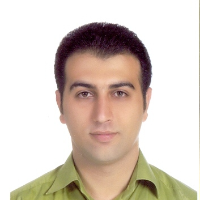Modeling the Groundwater Water of Damghan Plain and Optimizing the Cropping Pattern in Order to Prevent the Drop of the Groundwater Level
Excessive exploitation of groundwater in Damghan plain has caused many problems such as land subsidence in the study area, along with the reduction of the groundwater level and the loss of a part of the aquifer and the reduction of the specific yield of aquifer. Therefore, in order to control the withdrawal from the aquifer and as a result to reduce the drop in the groundwater level in that plain, it was investigated. For this purpose, in this research, the mathematical modeling of Damghan Plain was done for the optimal management of exploitation and providing the optimal cultivation pattern in order to save water consumption with the focus on controlling the groundwater level and limiting land subsidence.
In this research, Damghan plain aquifer was first simulated using MODFLOW mathematical model. Then, taking into account different scenarios of aquifer exploitation, using the NSGAII genetic algorithm, optimization of multi-objective exploitation of water resources and optimal management of water supply and demand in the agricultural sector was done. The results of the model were evaluated based on statistical error parameters to predict the ground water level.
The results of this research showed that the MODFLOW numerical model was able to simulate the groundwater level of the studied plain well in steady and unsteady conditions in the calibration and validation stages. Also, the results of the simulation-optimization algorithm showed that by changing the cultivation pattern and also by changing the type of irrigation system from traditional to modern irrigation and as a result of increasing the irrigation efficiency (90 percent), the average drop of the groundwater level of the plain can be reduced. It reduced the groundwater level of the study area from 0.49 m in existing conditions to 0.07 m in optimal conditions. This will compensate the deficit of the aquifer from 31.90 to 5.1 million cubic meters per year.
Using management strategies such as changing the cultivation pattern, increasing irrigation efficiency, and also by controlling surface water and injecting it into groundwater, the process of reducing the groundwater level in the studied plain can be completely controlled and provided 100% of the water needs of the plain.
-
Development of artificial neural network and particle swarm algorithm to predict inflow to dams under the influence of climate scenarios
Mehrnoosh Hedayatizadeh, Saeed Jamali *, , Somayeh Yousefi
Journal of Water and Irrigation Management, -
Optimization of Water Resources Systems in Real Time based on the Integration of Multi-objective Grey Wolf Algorithm and Artificial intelligence
Hassan Biglari, Saeed Jamali*, , Saeid Shabanlou
Journal of Iranian Dam and Hydropower, -
Evaluating Soft Computing Models for Hydrologically Homogenizing Regional Floods (Case study: Karkheh river basin)
SAHAR SAFARI, MohammadSadegh Sadeghian *, , S.Sajad Mehdizadeh
Journal of Water and Irrigation Management, -
Assessing Variation of Runoff and Nitrate Concentration in Management Scenarios Using SWAT Model, (Case Study: Hashtgerd Plain)
Mahmoodreza Nooralinejad Islamloo, Mojtaba Shourian *, S.
Iranian Journal of Soil and Water Research,



